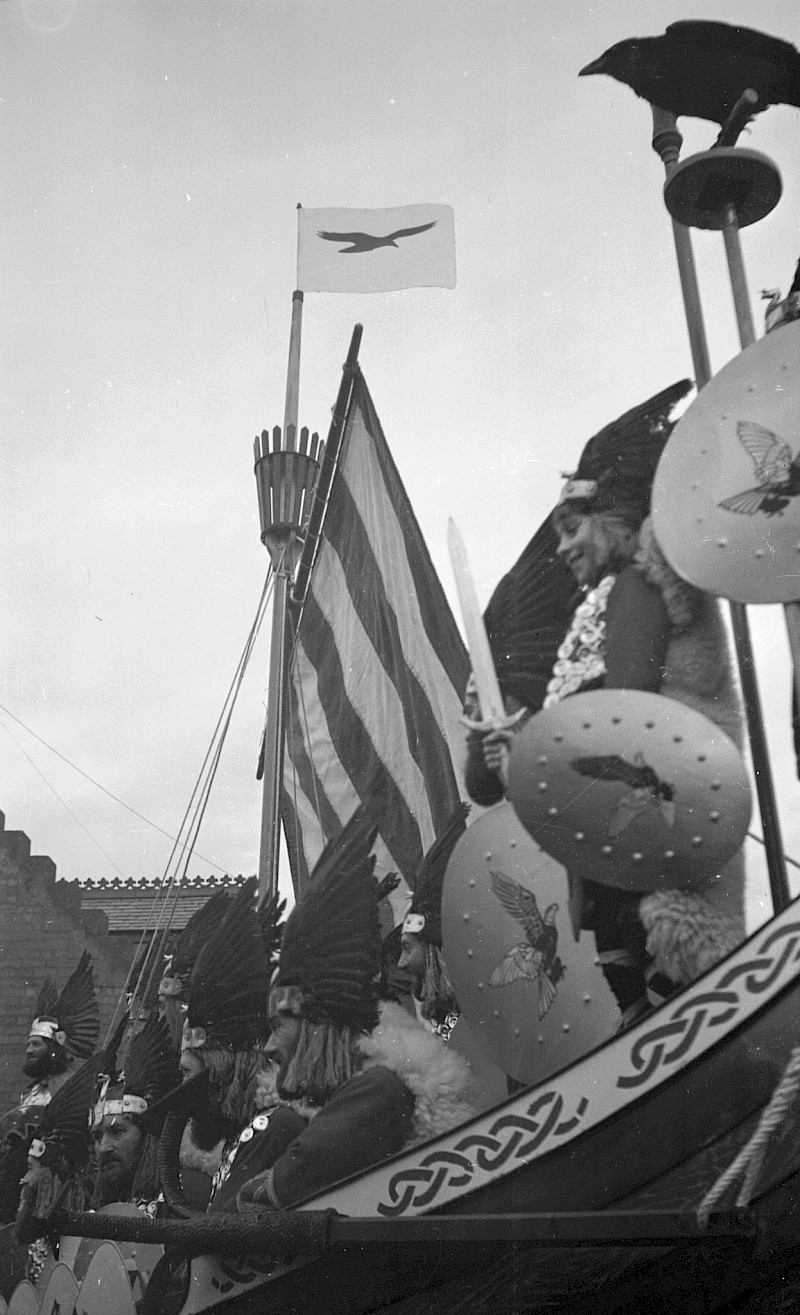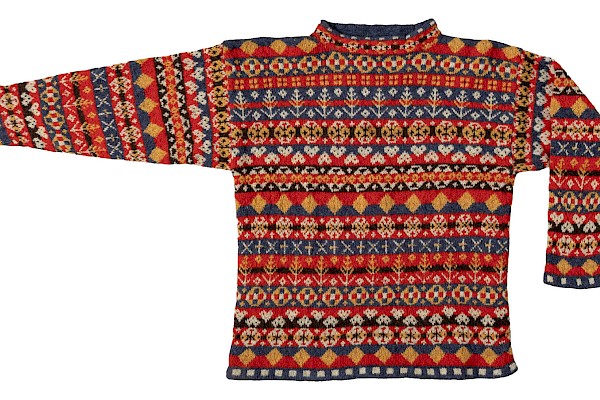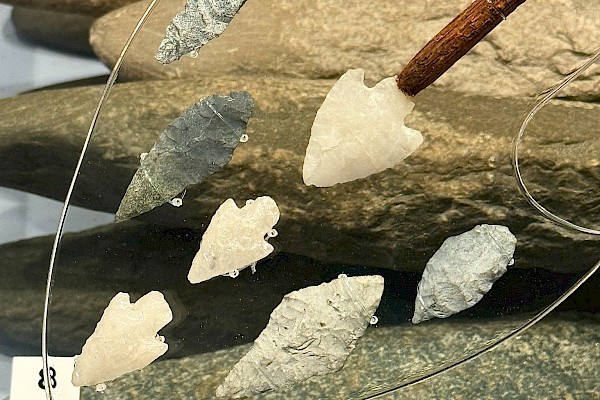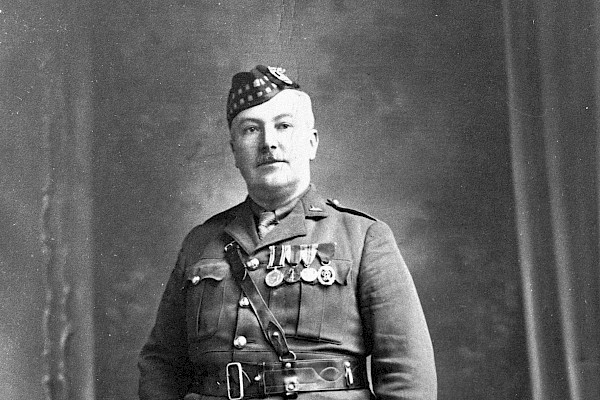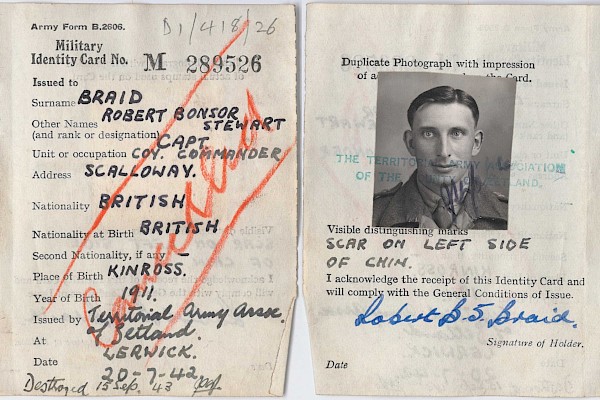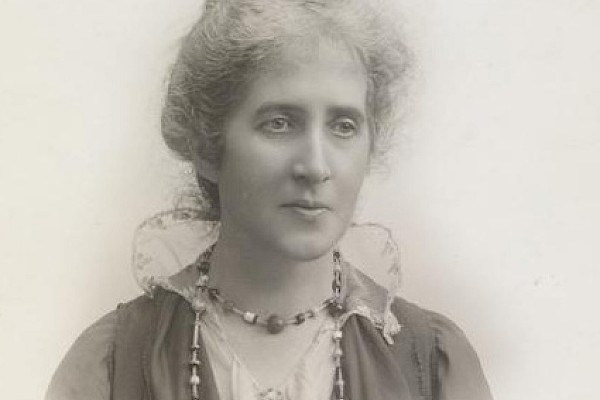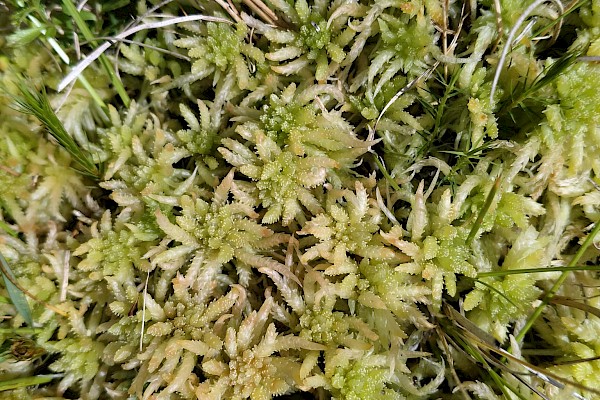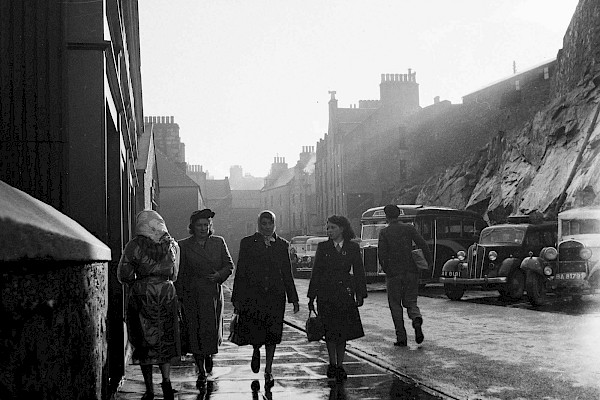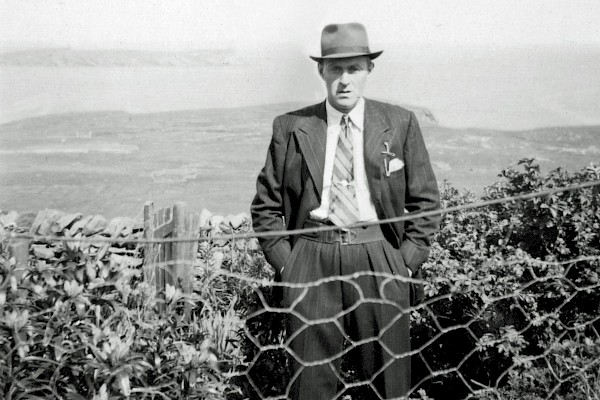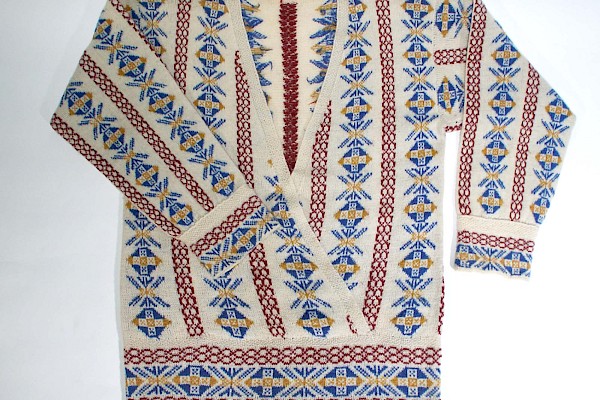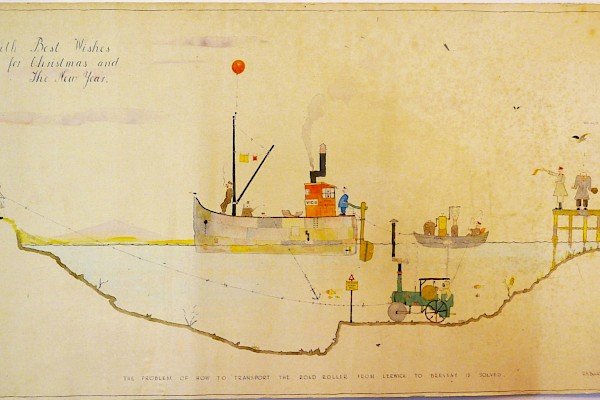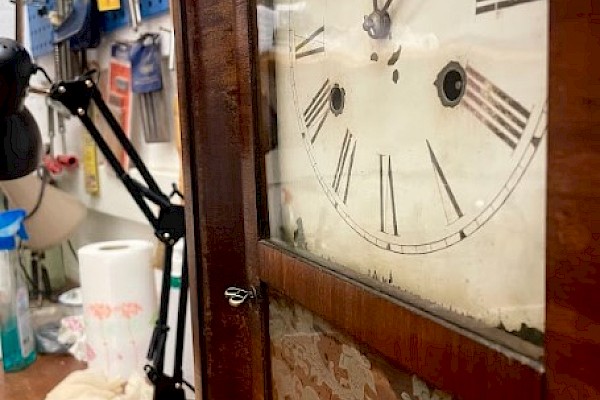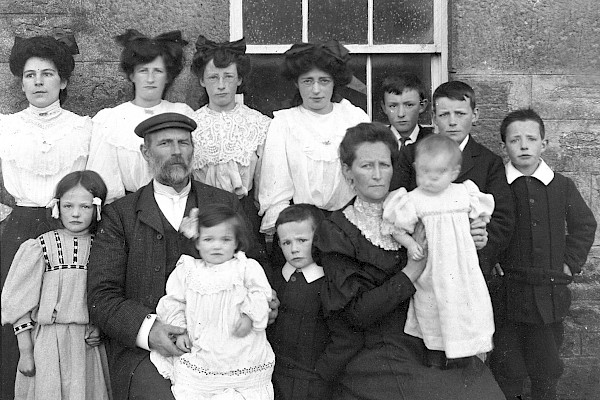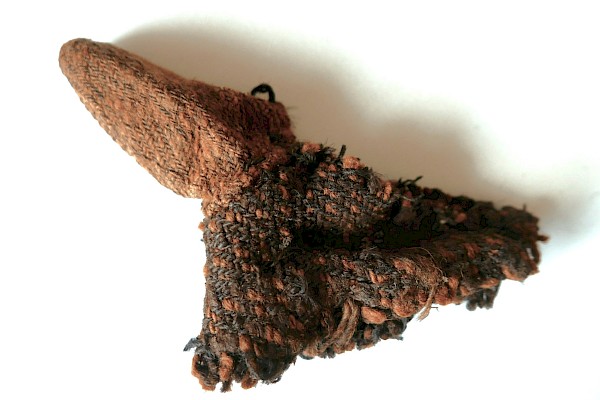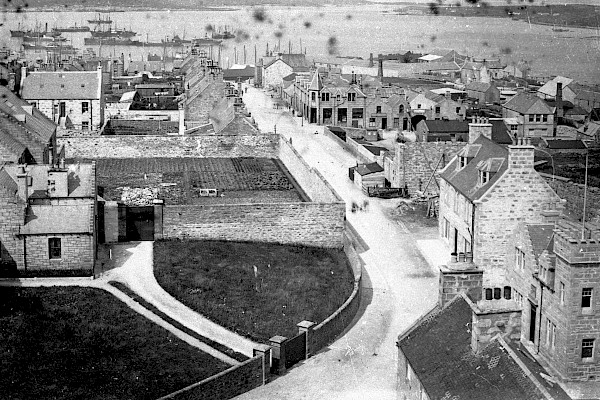The Eyjarskeggjar
The images of Up Helly Aa go like this – the burning longship, arms and armour, and bearded men. The present Jarl Richard Moar has made a good effort – about a foot of facial hair – and a recent Jarl had a difficult moment when his own formidable effort got caught in a car door. It wasn’t always so....
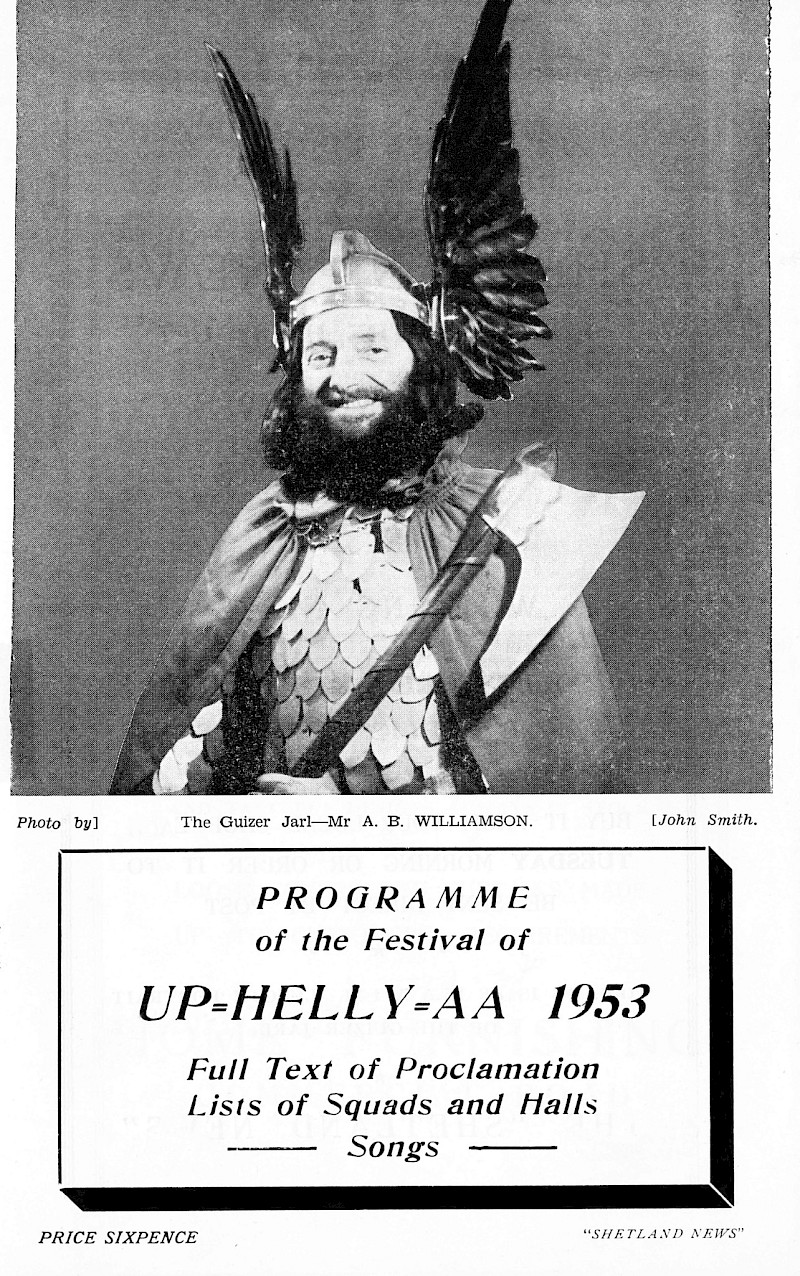
For most of the twentieth century (the first Jarl featured in 1906) the Jarls and their squads followed the fashion of the time and were clean-shaven. They may even have gone to the barber for a special occasion shave. It was important for a Viking to be smartly turned out. Things began to change in 1953 when Arthur Williamson, often known as “Attie,” with a few others in his squad, grew their beards, and marched forth.
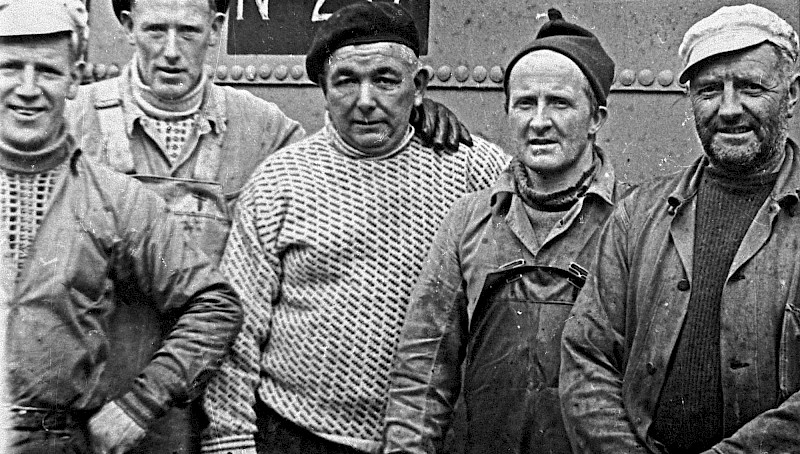
Attie was a Docks Boy, born in the houses that were in the Hay & Company fiefdom at Freefield. The Docks Boys were an important component in the early festival. Attie was a very working class Jarl, and had served an apprenticeship with the Malakoff shipyard. Other work included a winter at the South Georgia whaling, the seine net with Robbie Watt, and in the merchant navy on salvage vessels. Attie worked in places where beards would not be disapproved of greatly. For white-collar workers, business and professional people, who often played a great part in Up Helly Aa, a cleanshaven appearance was a respectable necessity. The next bearded Jarl came along 1958. After that, slowly, there were more.
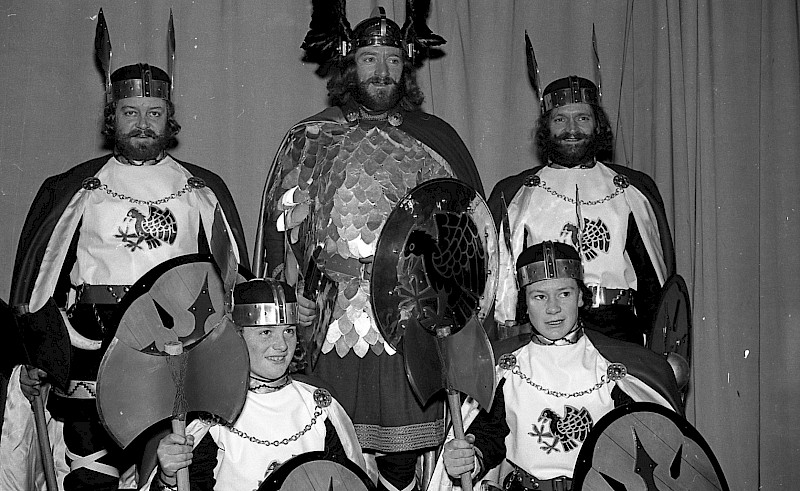
It made perfect sense for Attie’s squad to grow beards, calling their squad after the historical Norse warriors, the “Island Beardies” or Eyjarskeggjar (modern Norwegian – Øyskjeggene). But who were the Eyjarskeggjar? The name “Island Beardies” most likely isn’t correct. Eyjarskeggjar probably just meant “Islanders.” The “Island Beardies” nickname may have been added later, not really flattering, suggesting a lack of sophistication in the later era when shaving became common. Attie and his boys weren’t to know of course, and it was a good, colourful title, fitting in well with the merriment.
Whatever the Eyjarskeggjar were called they were important for Shetland in a particular way. We have to go back to the late 1100s when Harald Maddadson was Earl of Orkney, and hence Shetland’s ruler, and Sverre Sigurdsson, another islander, born in Faroe, was King of Norway and Harald’s ruler. 1130-1240 was the period of the Norwegian civil wars and transfer of kingship in Norway was not without dispute. Harald came to favour Sigurd Magnusson, a minor, the son of King Magnus, who had been defeated and killed in a battle with Sverre. It wasn’t an entirely disinterested belief on the part of Harald as another Harald, Harald Ungi (Harald the younger) a grandson of Earl Rognvald Koli Kolsson had a claim on the earldom. Basically, remove Sverre, remove the claim.
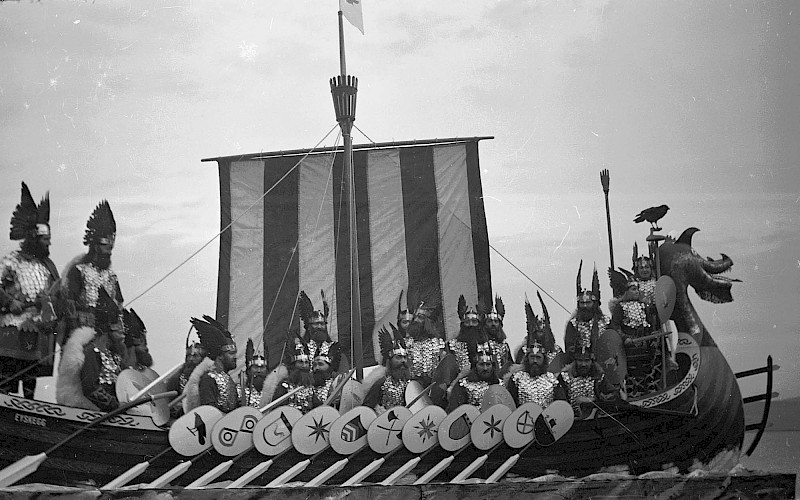
Things began to move ahead in 1192. Two men called Halkjel Jonsson, and Olav Jarlsmåg came on the scene. Olav “had great possessions in Shetland.” He sailed there with the boy Sigurd. In the voar of 1193 Halkjel headed for Orkney and Earl Harald, and so did Olav and Sigurd.
It’s a bit difficult to comprehend what took place in Orkney and Shetland that spring, since it sounds like a tail trying to wag a dog, but about 2000 men were raised in the islands in an attempt at regime change in the north. Shetland is said to have raised the biggest portion of men. It’s often difficult to figure out numbers for such a distant era, and the Shetland population could not have been large. Worth remembering though, is that this kind of expedition could easily incorporate stray warriors, adventurers, and plain chancers, from nearly anywhere.
How did Olav do it? He probably moved among his estates in the same way that Highland chiefs did centuries afterward. Among the peaceful farmers and fishermen, and Olav’s middlemen, there were some who no doubt had a strong loyalty to Sigurd. For others favours were called in, there were offers of payment and crucially, loot. Plain, ordinary coercion probably played a part too. So Shetland rendered up sons, brothers, and fathers. This force didn’t call themselves “Islanders,” almost certainly not “Island Beardies” but Gulbeiner or “Goldenlegs” after their habit of wearing short tunics with bare legs. In other words they turned up in Norway with a tan.
It all went well for a while. They sailed for Norway in 1193 and took control of a good portion of the country, including Bergen, excepting Sverre’s castle there, defended by some of king’s stalwarts. Sigurd was proclaimed King. Things came to a climax on 3 April 1194 when Sverre’s fleet attacked the Gulbeiner ships. This was the Battle of Florvåg, in a voe near Bergen. After an initial encounter Sverre’s fleet had to retreat, but the Gulbeiner fleet had lost many of their oars, entered an unfavourable current, and were devastated by the royal force. Only a couple of ships survived, and estimates of the Gulbeiner killed range between 1000 and 1500, a huge loss of manpower in the Earldom. Halkjel and Olav died, and poor Sigurd, only 14, was lost also. Sverre put the boy’s body on display before burying him.
Harald Maddadson survived. He travelled to Bergen, with a party of Orcadians and the aid of the Bishop of Orkney. He had some skill at being plausible, and he pleaded with Sverre that he was an old man, and couldn’t control everything that went on in Orkney, and to top it off laid himself down at Sverre’s feet. He grovelled, and lived. He went back to Orkney, still involving himself in violence. He disposed of Harald Ungi at the Battle of Wick in 1198, and was involved in a Game of Thrones standard attack on the Bishop of Caithness later on. He died of natural causes in 1206, or as we might say “he dee’d aff o his bed.”
Sverre took Shetland, where the major component of the perpetrators originated, from Harald’s control. He confiscated estates in both island groups, with a time period for redemption by relatives. Shetland moved away from Orkney, and closer to Norway.
One wonders what would have happened if the Gulbeiner had succeeded. We wouldn’t refer to them as “Island Beardies” at any rate. Their incursion into Norway changed the history of Shetland, not quite in the way they intended. And centuries later Attie Williamson and his squad, embracing the Eyjarskeggjar name with gusto, changed Up Helly Aa.
